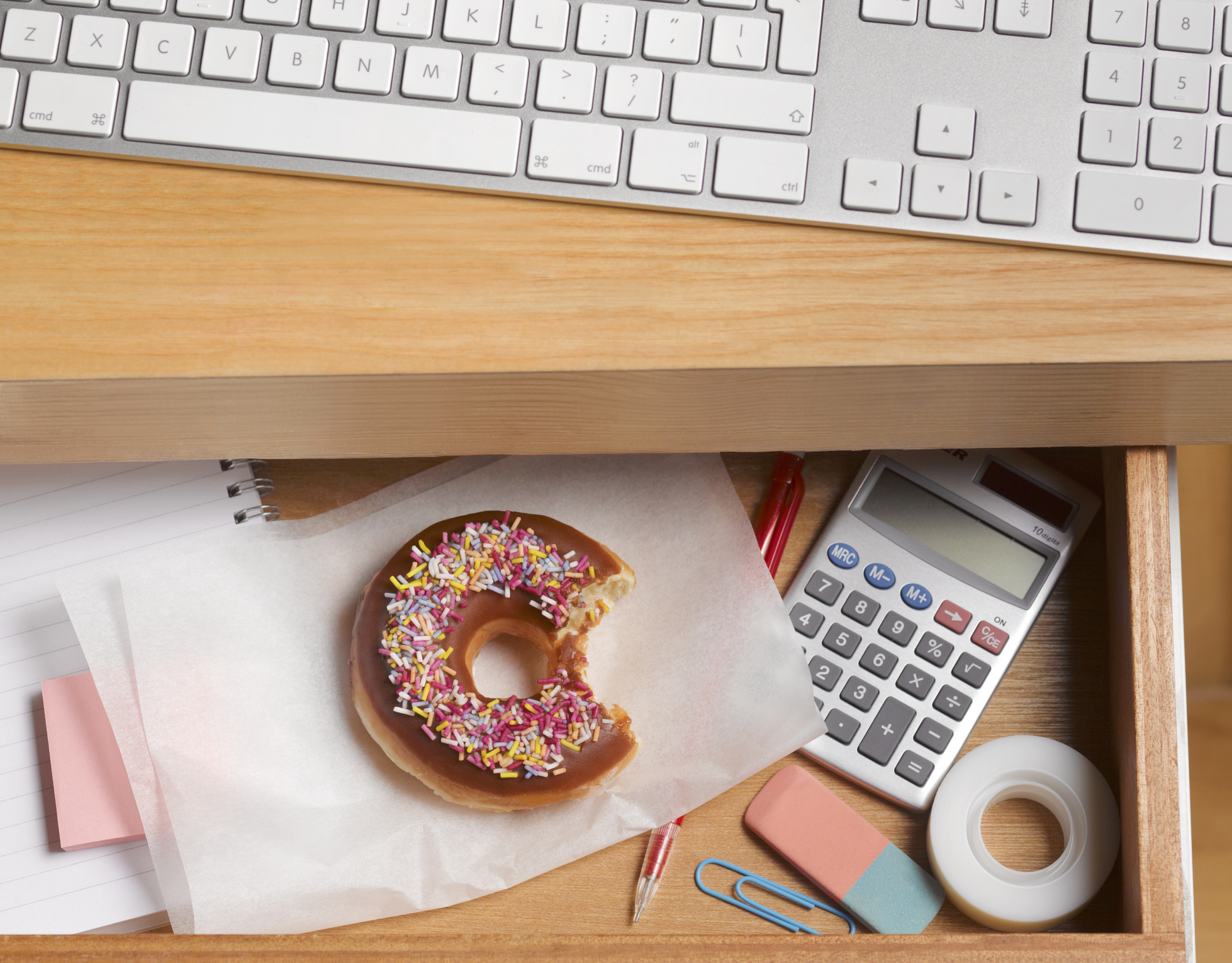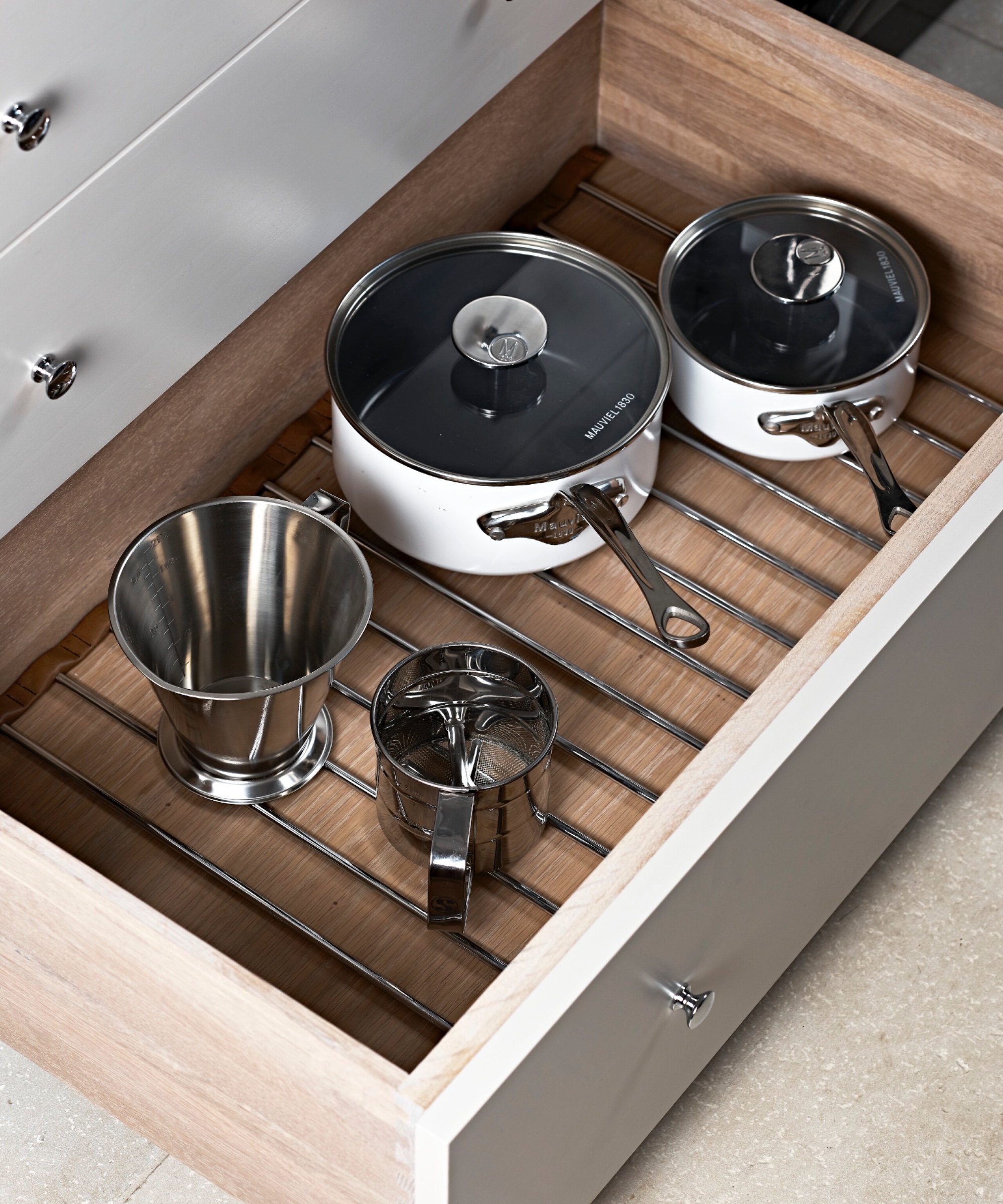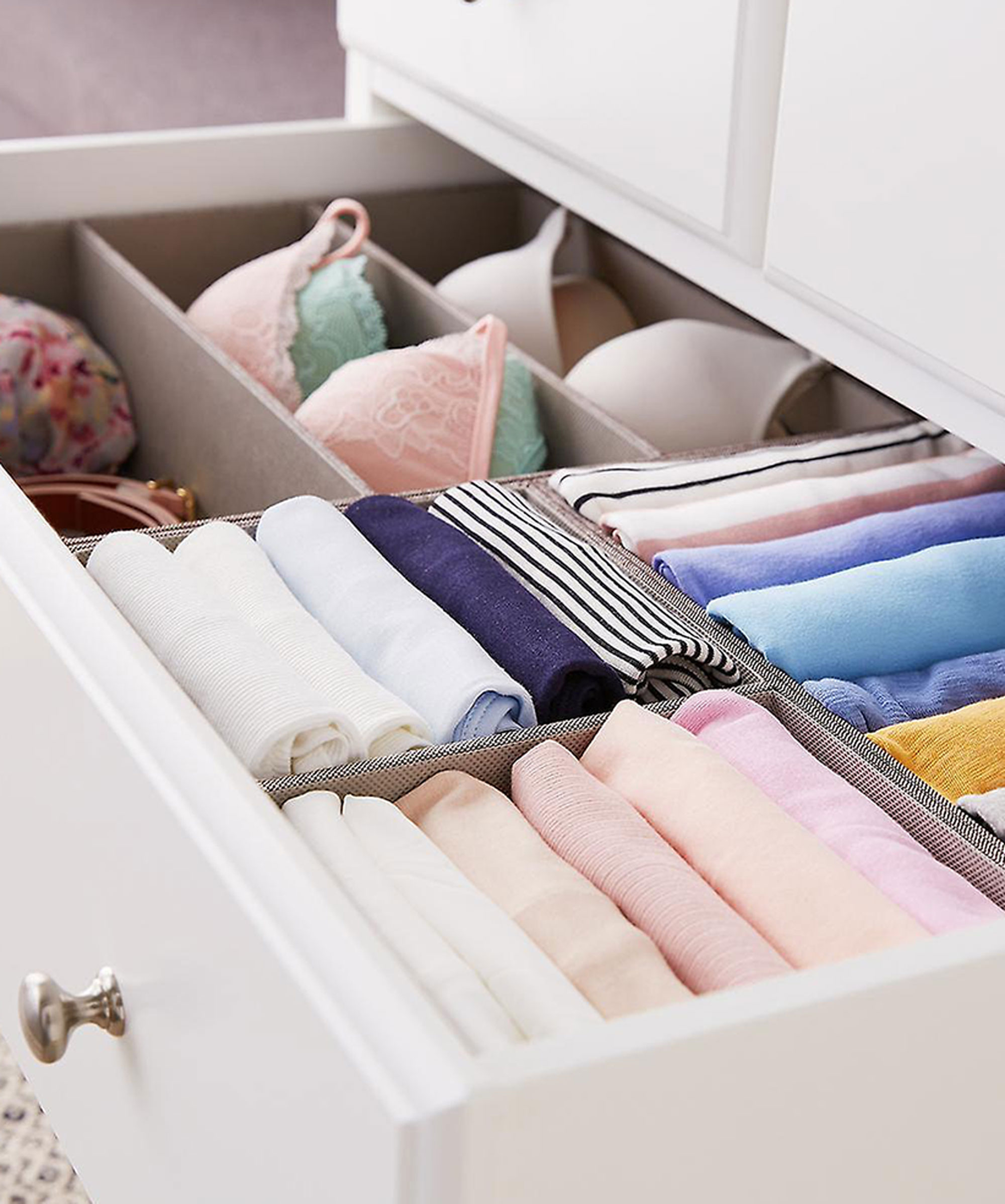Organizing drawers – 10 ways to create order around the home
With these expert approaches to organizing drawers the contents will be accessible and neat


Organizing drawers well is an art. A well organized drawer ensures locating items is a quick process, and means the contents stay in good condition, too, making life at home run more smoothly for every family member.
But although they provide the perfect stash space when you organize a living room, kitchen, bathroom, bedroom, and more, drawers can become disordered and clutter-filled without the right systems in place. Decluttering, sorting out what goes where, grouping items, and dividing up the space are all crucial tactics.
To optimize the valuable space drawers provide, be inspired by the techniques and storage ideas experts use for organization all round the home.
Organizing drawers
For a neat and tidy home, organizing drawers effectively is a must. This includes giving each one a purpose, says Barbara Brock, founder & CEO of Beauty & The Box and past president of the National Association of Productivity & Organizing Professionals, New York chapter.
‘Too often drawers get cluttered for two reasons: they don’t have a purpose and everyone in the household isn’t clear about what doesn’t or even what does go into that drawer,’ she says. Here’s the lowdown on the best way to organize drawers.
1. Decide where to begin organizing drawers

As they’re located all round a home, the task of organizing drawers can feel a little overwhelming and it can be hard to know where to start. Professional organizer Brenda Scott of Tidy My Space recommends commencing with the drawer bothering you the most.
‘It could be the junk drawer or maybe you are organizing kitchen drawers, such as the utensil drawer,’ she says. ‘Start with this one because you’ll get the biggest emotional reward from having this tidy and organized.’
Design expertise in your inbox – from inspiring decorating ideas and beautiful celebrity homes to practical gardening advice and shopping round-ups.
As to the procedure, ‘Take everything out of the drawer, wipe the interior, replace the drawer liner (if it had one), and look at everything. Is it in good condition? Do you use it? Do you like it? Does it need to be here?’ asks Brenda.
‘Some drawers get disorganized because items get thrown in that really belong in another drawer or even another room but never got there. Group like items together and separate items that belong somewhere else. For those that belong somewhere else, use a box labeled as such, so that you know that they need to be taken somewhere else.’
2. Divide and contain
Keeping different items from getting mixed up is essential when organizing drawers.
‘Use full length drawer dividers for long items and smaller open top containers for small items,’ says Brenda Scott. ‘For example, long dividers for a drawer with cooking utensils, rolling pin, tongs, spatulas, pizza cutters, salad forks, scissors, pens etc. Small containers for notepads, paper clips or bag clips, stacks of coupons, anything that is loose and would move around in the drawer.
‘Utensil trays are great to keep your flatware and anything else that fits that size contained and organized. It can be cooking utensils, knives, chopsticks, reusable straws, measuring spoons, bottle openers, and corkscrews.’
3. Plan to prevent slippage

One of the reasons why drawers become disorganized is because the contents slide about when the drawers are opened and closed. ‘Keep items in place by using dividers, containers, or grippy liners,’ says professional organizer and the owner of Simply Thriving Organization Sonja Meehan.
Liners like this metal rack are ideal for drawers designated for larger kitchen items such as saucepans and casseroles. They may come as part of bespoke cabinets but it’s easy to add liners if you’re not remodeling the kitchen.
4. Find one home for scattered items
Deciding what should be stored in the drawers in a particular room can often be an easy choice, but there are some items that don’t necessarily have a ‘natural’ home, and can end up spread between different drawers. According to Barbara Brock, these categories can include: tools, crafts, ear buds/cords, light bulbs, batteries, office accessories, glue/tapes, and travel Items.
Decide which drawers should contain each of your forgotten categories, and let everyone know. ‘Inform all in the household what goes into this drawer if it is a communal drawer,’ says Barbara. ‘Labeling a drawer (short term) helps.’
5. Organize drawers in the bathroom

When you’re organizing a bathroom vanity built-in dividers – or vanity organizers – can assist in bringing order. If its drawer(s) don’t have them? ‘Use containers that maximize the width and length of the drawers,’ says Brenda Scott. ‘Measure the drawer and decide what item goes where before you purchase any organizing solutions.’
Since what goes into bathroom drawers is often small you may need additional ways to corral items. ‘I like to use clear acrylic open top containers: they look clean and you can wash them easily,’ Brenda says.
6. Think day and night when organizing drawers
Whether you keep cosmetics, beauty, and hair products in the bathroom or in a bedroom vanity, if you have more than one drawer, consider separating items used at different times of the day. It’ll make your preparations more efficient.
‘I like to have the items for my morning routine in the top drawer of my vanity and nighttime items in another,’ says Brenda. ‘This saves me time looking through many drawers to find my skincare, then makeup, then hair items.’
7. Make clothes easy to locate within drawers

When you’re organizing clothes or drawers in bedrooms and dressing rooms, ensure the right item of clothing is easy to find. ‘Use file folding to keep everything visible,’ says professional organizer Sonja Meehan, owner of Simply Thriving Organization.
‘File folding has several benefits: it makes finding the item you want a snap, it allows you to see everything you have at a glance, and it is so much easier to maintain than piles of clothes.’ Here again, dividers can help keep drawers neat, while grouping colors speeds up dressing.
8. Keep undies neat

Drawers containing underwear can become messy but good clothes storage ideas will put the right systems in place. ‘I like to use cloth containers the full length of the drawer for undies, one for socks and another for bras,’ says Brenda Scott.
‘Roll the undies Marie Kondo style,’ she says. ‘For the bras, if you have room, you can open them up and stack them horizontally, back to front. If you don’t have that much space, fold the bras in half and stack them horizontally back to front. The bra cups fit inside the bra in front of it; you can get a lot organized in a small space; they retain their shape; and you can see them easily.
‘For the socks, roll them like cinnamon rolls placed tightly on a baking sheet. This method allows the socks to keep their shape without getting the bands stretched when you fold over the top band to hold the pair together.’
9. Follow the like-with-like rule

Just as when organizing a home office, putting like with like is an invaluable organizing rule, and should always be part of the process when it comes to drawers. But don’t forget that it may be necessary to go further to make locating exactly what you need a piece of cake.
‘Small groups of like items should be contained together within a drawer,’ says Sonja Meehan. Bear in mind you might need to label these sections for speedy location, too.
10. Make use of utility closet drawers
If you’re the lucky owner of a utility closet, its drawers are the perfect place to stash some of the items that can be hard to find the perfect place for. Barbara Brock suggests tools, light bulbs, batteries, glues, string and tapes, crafts, and extension cords.
How do you organize a messy drawer?
To organize a messy drawer, it’s always best to declutter first. ‘The less you keep in the drawer, the easier it will be to organize,’ says Sonja Meehan.
‘So purge before you start to organize. If you don't need/want/love it, it should go. If it doesn’t have a logical connection to the other items in the drawer, it belongs somewhere else.’
What should go in a junk drawer?
Many kitchens have a junk drawer, but if it’s to be a useful space where you can find the items you need, try this organization method from Laura McHolm, professional organizer and co-founder of NorthStar Moving & Storage.
‘First, dump everything out of your amazing junk drawer and remove items like the below,’ says Laura.
‘Those mysterious parts: (you know, the parts of things that you don’t know what they are but they look really important.) Take an empty jar such as a pickle jar and put those random pieces in it. Place the jar in a storage room, so when the day comes that you discover what they go to, there they are.
‘Take-out menus: we know you keep them so you can flip through and see all the options, but all the menus are online. Create a Word doc listing all your take-out options with the links to their menus then you can even order on their website, saving the call.
‘Receipts and business cards: if you really need them, use a receipts scanner to save them electronically and get them out of the drawer. The same goes for business cards; put them in your contacts in your computer or phone and get rid of them.’

Sarah is a freelance journalist and editor. Previously executive editor of Ideal Home, she’s specialized in interiors, property and gardens for over 20 years, and covers interior design, house design, gardens, and cleaning and organizing a home for Homes & Gardens. She’s written for websites, including Houzz, Channel 4’s flagship website, 4Homes, and Future’s T3; national newspapers, including The Guardian; and magazines including Future’s Country Homes & Interiors, Homebuilding & Renovating, Period Living, and Style at Home, as well as House Beautiful, Good Homes, Grand Designs, Homes & Antiques, LandLove and The English Home among others. It’s no big surprise that she likes to put what she writes about into practice, and is a serial house renovator.